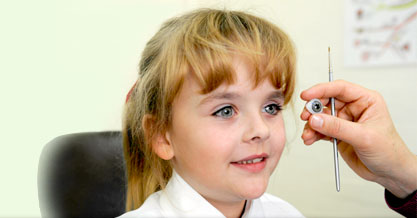Going Home After Eye Surgery
Going Home After Eye Surgery
General Advice
This information has been prepared for people who are returning home after having had an eye removed.
During surgery a clear shell is placed in the eye socket. Don’t panic if it falls out. It is only there to keep the eye socket comfortable and facilitate healing. Simply wash and place it back in the socket. If you find this difficult, your ocularist can help you.
There is a six- to eight-week waiting period before you can be fitted with your new eye prosthesis. This time allows for healing and for any swelling to go down. Be sure to visit your ocularist during this time so that the next stage can be explained and any questions answered.
This waiting period is also a good time to contact a support group for people who have artificial eyes. Talking to someone who has been through the same experience is an effective way to reduce worries. Ask your ocularist to put you in touch with your local network.
Some people have found professional counselling with a psychologist beneficial as well. Feelings of anxiety and depression are normal during a major life change. It is wise and practical to arrange as much support as you need.
Driving
You should check with your insurance company to clarify their policy on driving after eye surgery. Some require a waiting period of three months.
Caring for your Eye
Your immediate task is to become confident in looking after your eye. We understand that an unfamiliar situation can cause stress, and we are committed to helping you through this time of change. In a very short time you will be relaxed and confident managing all aspects of having an artificial eye.
Please call your ocularist if you need clarification on any of the following:
- Make sure your eye drops/ointment are fresh. Keep in mind the expiry date on the container.
- Wash your hands before and after instilling eye drops.
- It is important to continue your eye drops/ointment and medication after discharge from hospital.
- It is important to keep the tip of the bottle clear of the eye, lid or lashes. This is again helpful for the prevention of infection.
- Use your medication as prescribed
Some symptoms need urgent medical attention. See your doctor if you have any:
- sharp or severe eye pain
- headache significant discharge from the eye, in particular bleeding or discolouration increasing redness in the eye excessive tears
Depending on the degree of severity, if your doctor is not available, you might also call a hospital eye clinic or attend the emergency department. If the eye is sticky in the morning, clean with cooled, boiled water and soft gauze or tissues.
For two weeks after the operation it is recommended that you avoid:
- heavy lifting
- rubbing the eye
- bending forward to do things.
- washing your hair with your head bent forward
- any knock to the eye.
Wear glasses when going out or an eye shield for protection. Keep your follow-up appointment. Bring all eye drops with you when attending the outpatient eye clinic. Always use separate tissues for each eye.
This information has been drawn together in consultation with ocularists and ophthalmologists throughout Australia and should be used as a guide only. Individual circumstances may require a professional opinion.



